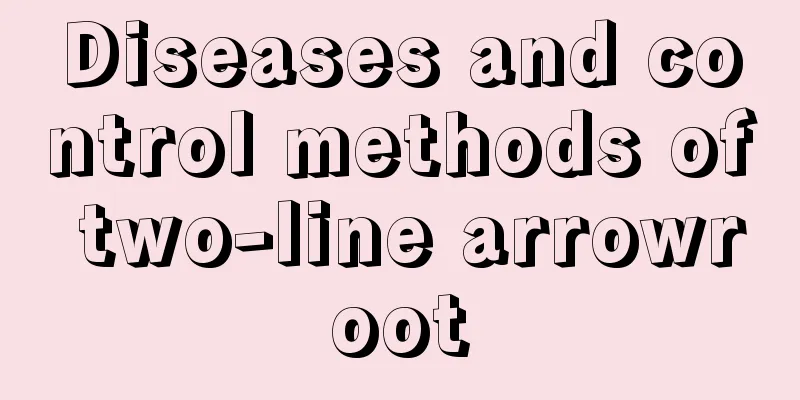Diseases and control methods of two-line arrowroot

Diseases of the two-line arrowroot: white rotsymptomThe disease is more serious in July and August, but it also occurs frequently at other times, often because the soil is too moist or poor. In the early stage, white silky hyphae grow out of the stems or leaf bases in a radial pattern and can spread in the soil. In the later stage, the above-ground part of the plant will wither and die, the mycelium will turn yellow, and eventually brown or tea-brown, shaped like rapeseed, and the whole plant will die. Prevention and treatment methodsYou can disinfect the soil by adding 70% pentachloronitrobenzene, which is 0.2% of the soil weight, to the potting soil. Before sclerotia form, remove the diseased plants, discard the soil and use new soil. During daily maintenance, always pay attention to ventilation and avoid planting too densely. Diseases of the two-line arrowroot: leaf spotsymptomIt can occur throughout the year, but most often occurs in September, October and March. Leaf spot disease is mainly caused by poor daily management, lack of timely ventilation, excessive watering, and poor soil. Diseased debris is the source of primary infection of leaf spot disease, which mainly harms leaves but also leaf sheaths. In the early stage of the disease, small water-like spots appear with a diameter of less than 1 mm. In the later stage, the spots gradually expand to about 2 mm in diameter, reddish-brown in color, and there is no halo around the spots. Finally, the leaves of the plant turned yellow, fell off in large numbers, and the growth became weak. Prevention and treatment methodsApply more base fertilizer to ensure soil fertility and enhance disease resistance. If you find diseased leaves, remove them immediately to prevent the disease from spreading further. If the plant is seriously ill, dispose of it immediately. Before the disease occurs, you can spray 500-600 times diluted 75% thiophanate-methyl wettable powder or spray 1000 times diluted 75% thiophanate-methyl wettable powder plus 1000 times diluted 70% methyl thiophanate wettable powder for prevention and control. |
<<: Diseases and pests of star flower and their control methods
>>: Six Disease Prevention and Control Methods for Daphne koreana
Recommend
When and how to prune citrus trees
Citrus trees are planted in a large area in China...
Is it possible to plant cucumbers in successive crops?
Cucumber is a common vegetable and the most widel...
Cutting method and cutting time of Schefflera
Schefflera , also known as Schefflera arborvitae ...
Does spring rain prefer shade or sun?
Does spring rain prefer shade or sun? Spring rain...
When is the best month to plant chili pepper in the north?
When is the northern chili pepper planted? Northe...
Does the newly potted green radish need watering?
1. Is watering necessary? When the green ivy is f...
The main value of five-leaf brocade
1. Ornamental effect This is of course the first ...
Hyacinth cultivation methods and precautions
1. Breeding methods 1. Temperature: It has high r...
If you can’t do this when growing flowers in summer, your flowers will be doomed!
1. Direct water spray This method is more suitabl...
The correct way to water cyclamen, what to do if you water too much
1. The correct way to water 1. Watering during th...
Do you need to trim the leaves of white palm?
1. Do you need to trim the leaves? During the gro...
How often should you water your gardenia?
1. Habits This flower likes water. If it grows un...
Cultivation methods and precautions of palace lantern longevity flower
Farming methods Soil requirements The requirement...
The difference between woodruff and rose
1. Basic characteristics 1. Woodruff flower. The ...
What are the cultivation methods and precautions of Longzhu
How to grow dragon bamboo Dragon bamboo is a plan...









